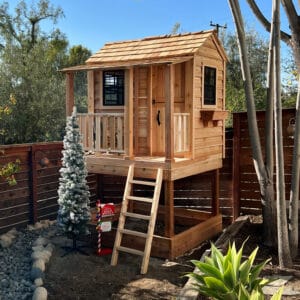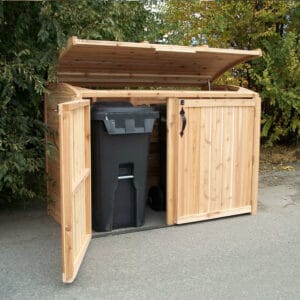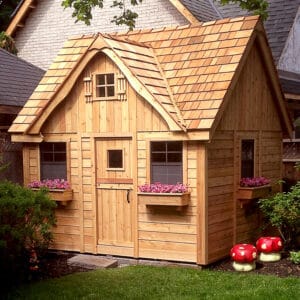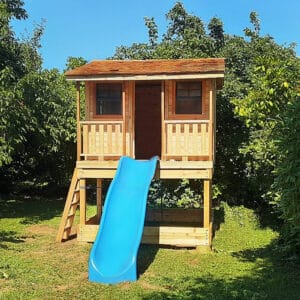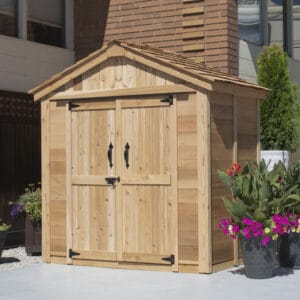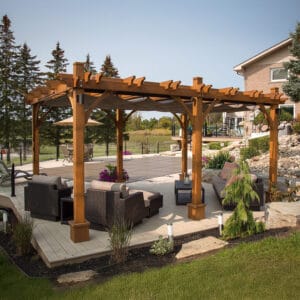No products in the cart.
February 2, 2015
 Lawns are part of your social heritage; and most of you have probably inherited lawn-care ideas and how to’s from your predecessors, or your knowledgeable family members. You rarely let your gardener or lawn caretaker give you guidance on how to take care of your lawn. Interestingly enough—back in the 50’s, chemical pesticides were generously used—so much so that the “legacy of overusing chemicals in lawns” led to legislation.In the United States, though a large number of chemical pesticides are still in use, American citizens are gradually becoming concerned about the negative impact of chemicals on their environmental eco-system and are learning the keep their lawns fresh and green using greener methods.Good lawn-care practice constitutes regular mowing, watering, feeding, and fertilizing. If the soil content is carefully monitored, then automatically the health of your lawn will improve and naturally resist weeds and pests. You will rarely come across pest or weed problems in a well-soiled, watered, fertilized, or properly mowed lawn.Watering During the summer, water the lawn more frequently than during the winter. This is obvious but there is a reason for stating this simple fact. Overwatering can easily lead to rotting roots, so be careful about how frequently you water the lawn. A little under-watering can lead to temporary browning of grass during the summer months, but the grass will quickly recover once it starts raining again.If you have just planted new grass, then you may have to water the lawn on a regular basis such as once a week. A prudent way to keep the grass moist at all times is to use a water sprinkler a few times a week or set up a water system which will require a landscaper to complete this project. It is up to you how much you want to invest in your lawn. Everyone is in their own financial situation.AeratingAerate when the soil is moist, usually after a rain or after you have watered the lawn. You will usually aerate when the grass is growing. Aerating enables loosening of the soil and, and prevents thatch buildup. You should never aerate when the soil is dry and hard, because the aerators will not penetrate the soil layers properly. You can aerate any time between spring and autumn.Feeding or fertilizingFeeding the soil is directly related to the soil condition in your lawn. You can incorporate the help of a professional to determine how much soil feed or fertilizer you need for the lawn at any point of time. Also, depending on your geographical location, certain types of fertilizers will be more effective, which a professional can help you select from a lawn care business.Additionally, if you leave the grass clippings on the soil on a schedule, then that will help to enrich the nutrients of the soil. You will also have to use a fertilizer—minimally once a year or more when necessary. Typically, summer and spring soil feeds are very high in nitrogen for growth of the grass. Remember to manually water your lawn within three days’ of feeding if it does not rain.Mowing
Throughout the year except winter, you can mow the lawn whenever the grass grows high. Depending on the type of grass you have planted, and depending on the soil and weather condition, the grass on your lawn will grow at its own pace.You have to keep an eye on its growth and come out with a regimen for lawn mowing, based on the needs of your lawn. During the spring, you may have to mow more frequently since this is when plant life springs upward and outward. While mowing, use some container to collect all the clippings for composting. From summer to autumn, the growth rate of the grass varies widely, so the lawn mowing schedule will have to be adjusted accordingly. Once a week is usually pretty good.Weeding OptionsGenerally, you will need to have the soil’s pH checked to determine when to start weeding. The normal rule of thumb is the more acidic the soil, the greater the chance of weed growth. You can use any standard weed killer product to maintain your lawn from the summer to autumn. In the winter, you can deploy some calcium nutrients to check the weed growth. You can also engage a gardener to manually uproot weed or fungus during the winter months. You could also just hire a neighborhood kid to complete some of these tasks.Seasonal careIn the summer, increase your mowing frequency to keep the grass looking neatly trimmed. Very hot and dry weather can affect the growth and health of the grass. In autumn, the rate of growth will gradually decrease. You may need to mow only once a fortnight (every other week) during this time.Better if you trim the edges to keep the lawn looking properly trimmed. In the winter, do not feed the grass since that may lead to premature growth and destruction of the lawn in severe cold weather. In the spring, the grass will automatically start growing again. Allow the lawn to recover after the winter, and then begin to employ a trimmer or a lawn mower about once or twice in a two week span.
Lawns are part of your social heritage; and most of you have probably inherited lawn-care ideas and how to’s from your predecessors, or your knowledgeable family members. You rarely let your gardener or lawn caretaker give you guidance on how to take care of your lawn. Interestingly enough—back in the 50’s, chemical pesticides were generously used—so much so that the “legacy of overusing chemicals in lawns” led to legislation.In the United States, though a large number of chemical pesticides are still in use, American citizens are gradually becoming concerned about the negative impact of chemicals on their environmental eco-system and are learning the keep their lawns fresh and green using greener methods.Good lawn-care practice constitutes regular mowing, watering, feeding, and fertilizing. If the soil content is carefully monitored, then automatically the health of your lawn will improve and naturally resist weeds and pests. You will rarely come across pest or weed problems in a well-soiled, watered, fertilized, or properly mowed lawn.Watering During the summer, water the lawn more frequently than during the winter. This is obvious but there is a reason for stating this simple fact. Overwatering can easily lead to rotting roots, so be careful about how frequently you water the lawn. A little under-watering can lead to temporary browning of grass during the summer months, but the grass will quickly recover once it starts raining again.If you have just planted new grass, then you may have to water the lawn on a regular basis such as once a week. A prudent way to keep the grass moist at all times is to use a water sprinkler a few times a week or set up a water system which will require a landscaper to complete this project. It is up to you how much you want to invest in your lawn. Everyone is in their own financial situation.AeratingAerate when the soil is moist, usually after a rain or after you have watered the lawn. You will usually aerate when the grass is growing. Aerating enables loosening of the soil and, and prevents thatch buildup. You should never aerate when the soil is dry and hard, because the aerators will not penetrate the soil layers properly. You can aerate any time between spring and autumn.Feeding or fertilizingFeeding the soil is directly related to the soil condition in your lawn. You can incorporate the help of a professional to determine how much soil feed or fertilizer you need for the lawn at any point of time. Also, depending on your geographical location, certain types of fertilizers will be more effective, which a professional can help you select from a lawn care business.Additionally, if you leave the grass clippings on the soil on a schedule, then that will help to enrich the nutrients of the soil. You will also have to use a fertilizer—minimally once a year or more when necessary. Typically, summer and spring soil feeds are very high in nitrogen for growth of the grass. Remember to manually water your lawn within three days’ of feeding if it does not rain.Mowing
Throughout the year except winter, you can mow the lawn whenever the grass grows high. Depending on the type of grass you have planted, and depending on the soil and weather condition, the grass on your lawn will grow at its own pace.You have to keep an eye on its growth and come out with a regimen for lawn mowing, based on the needs of your lawn. During the spring, you may have to mow more frequently since this is when plant life springs upward and outward. While mowing, use some container to collect all the clippings for composting. From summer to autumn, the growth rate of the grass varies widely, so the lawn mowing schedule will have to be adjusted accordingly. Once a week is usually pretty good.Weeding OptionsGenerally, you will need to have the soil’s pH checked to determine when to start weeding. The normal rule of thumb is the more acidic the soil, the greater the chance of weed growth. You can use any standard weed killer product to maintain your lawn from the summer to autumn. In the winter, you can deploy some calcium nutrients to check the weed growth. You can also engage a gardener to manually uproot weed or fungus during the winter months. You could also just hire a neighborhood kid to complete some of these tasks.Seasonal careIn the summer, increase your mowing frequency to keep the grass looking neatly trimmed. Very hot and dry weather can affect the growth and health of the grass. In autumn, the rate of growth will gradually decrease. You may need to mow only once a fortnight (every other week) during this time.Better if you trim the edges to keep the lawn looking properly trimmed. In the winter, do not feed the grass since that may lead to premature growth and destruction of the lawn in severe cold weather. In the spring, the grass will automatically start growing again. Allow the lawn to recover after the winter, and then begin to employ a trimmer or a lawn mower about once or twice in a two week span.February 2, 2015
-
 On SaleSale!%Off24Save $977977$24%977$On SaleSale!%Off24Save $977977$24%977$
On SaleSale!%Off24Save $977977$24%977$On SaleSale!%Off24Save $977977$24%977$ -
 On SaleSale!%Off11Save $230230$11%230$On SaleSale!%Off11Save $230230$11%230$
On SaleSale!%Off11Save $230230$11%230$On SaleSale!%Off11Save $230230$11%230$ -
 On SaleSale!%Off10Save $957957$10%957$On SaleSale!%Off10Save $957957$10%957$
On SaleSale!%Off10Save $957957$10%957$On SaleSale!%Off10Save $957957$10%957$ -
 On SaleSale!%Off26Save $1,8301830$26%1830$On SaleSale!%Off26Save $1,8301830$26%1830$
On SaleSale!%Off26Save $1,8301830$26%1830$On SaleSale!%Off26Save $1,8301830$26%1830$ -
 On SaleSale!%Off8Save $195195$8%195$On SaleSale!%Off6Save $150150$6%150$On SaleSale!%Off8Save $195195$8%195$
On SaleSale!%Off8Save $195195$8%195$On SaleSale!%Off6Save $150150$6%150$On SaleSale!%Off8Save $195195$8%195$ -
 On SaleSale!%Off26Save $1,2761276$26%1276$On SaleSale!%Off24Save $1,2631263$24%1263$On SaleSale!%Off29Save $1,6471647$29%1647$On SaleSale!%Off32Save $1,9371937$32%1937$On SaleSale!%Off38Save $3,3243324$38%3324$On SaleSale!%Off38Save $3,3243324$38%3324$
On SaleSale!%Off26Save $1,2761276$26%1276$On SaleSale!%Off24Save $1,2631263$24%1263$On SaleSale!%Off29Save $1,6471647$29%1647$On SaleSale!%Off32Save $1,9371937$32%1937$On SaleSale!%Off38Save $3,3243324$38%3324$On SaleSale!%Off38Save $3,3243324$38%3324$

